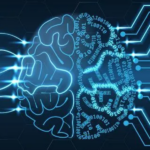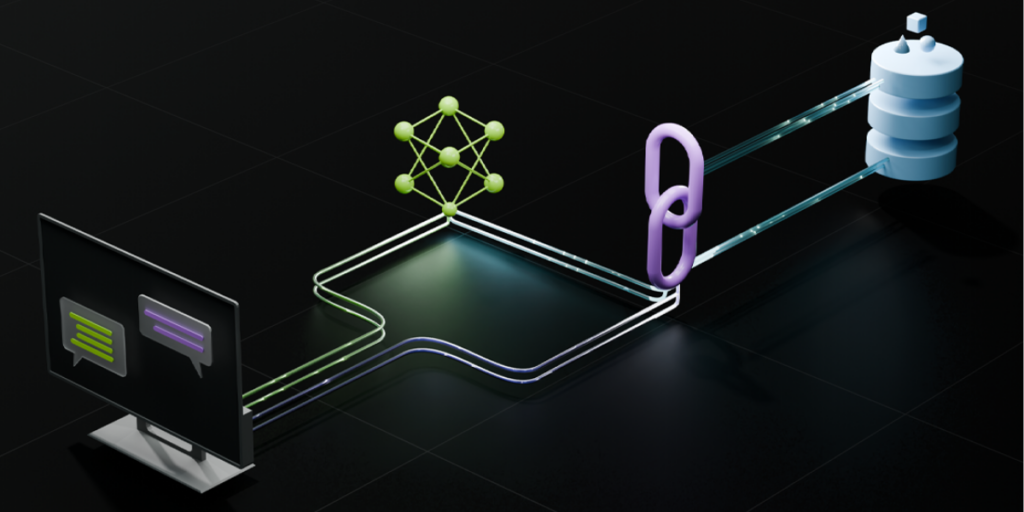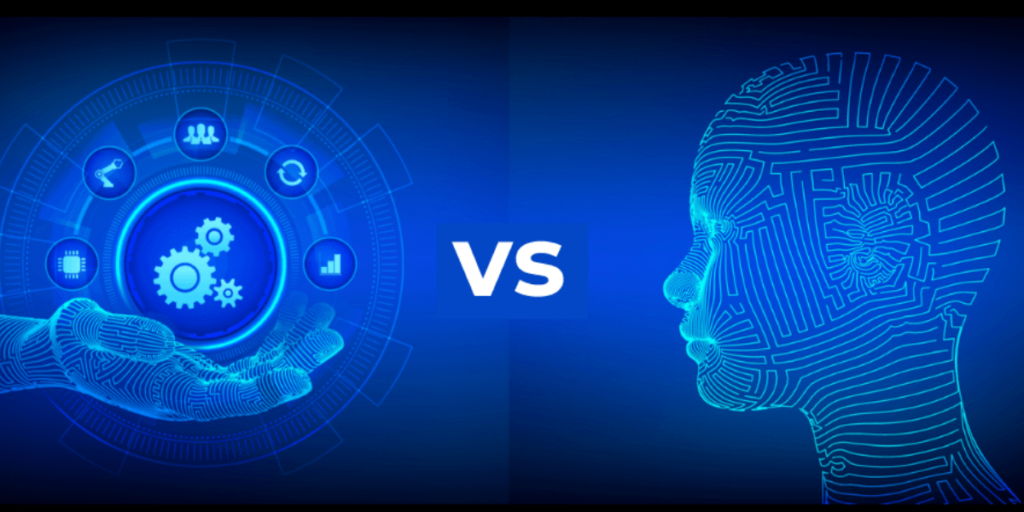AI is everywhere, from generating post ideas on social media platforms to developing early detection methods for diseases. Tech news is brimming with reports on AI’s positive effects and discussions of how integrating AI into products could increase a business’s efficiency. However, it was the introduction of ChatGPT that brought AI into the mainstream. Ultimately, for better or worse, AI development exploded, and firms began adding AI solutions to their services if they didn’t already offer AI services before.
The developers are examining AI and ChatGPT integration ways to provide a more engaging and personalized user experience. Everyone was suddenly looking for a ‘ChatGPT’-like’ feature in their apps. ChatGPT has been awe-inspiring both inside and beyond the AI business. Beyond the AI industry, it demonstrated the magnitude of improvement in performance over prior systems we’ve used in the wild.
Incorporating AI into a mobile application might take much work initially, as it involves complex technology and algorithms. Don’t be concerned! Whatever you’re looking for, this article will guide you through understanding the ways to integrate AI into your app.
So, let’s get started.
Understanding ChatGPT
ChatGPT is an artificial intelligence application that creates conversations. The program was created by Open AI, a high-capable chatbot that uses machine learning algorithms to process and analyze massive amounts of information in order to respond to questions from the user. This program can process language and comprehend written and spoken human language. It allows it to process the information it’s fed and what it can spit out.
ChatGPT has many features apart from answering basic queries. It can write essays, engage in philosophical debates, perform math calculations, or even program for users. The kinds of tasks ChatGPT could assist with aren’t as extravagant. ChatGPT is helping create essential lists for grocery shopping and packing and lists of things to do that can make my life better organized. The possibilities are limitless.
ChatGPT is fueled by a massive system of neural networks trained based on an enormous amount of online data, including Wikipedia documents and articles. This lets ChatGPT analyze a set of text a user inputs into the model, for example, the sentence that is half completed, and fill in gaps with the most statistically likely words given the situation—something like auto-complete. Iteratively, the process builds from words to paragraphs to sentences and eventually pages of text.
How ChatGPT Is Reshaping The Mobile App Landscape?
The use of ChatGPT as part of the development process to create applications, help developers improve app development speed, and write codes is not included. Evidently, there was a need to use this technology, and there was a belief that using ChatGPT could place businesses at the top of innovation and the importance of user-centricity.
Enhanced User Engagement
One of ChatGPT’s most important benefits is its ability to increase users’ engagement with mobile applications. ChatGPT makes the app more accessible and user-friendly by transforming commands into more natural, dialogic dialogues. For businesses, this can result in a higher level of user satisfaction and loyalty.
Personalization And User-Centric Experiences
A mobile application that uses ChatGPT could play an essential part in the emergence of an era of personalization in customer experiences. Product managers can use the model’s language capabilities to better understand users’ behaviour, preferences, and expectations.
The wealth of data available allows the creation of custom applications with interaction and content that is a hit with users on a personal level. With the increasing competition for mobile apps, personalization has become an essential factor that sets businesses apart and improves customer connections.
Revolutionizing User Interactions
To provide better, more interactive, and intuitive user experiences, ChatGPT takes center stage and moves away from conventional commands-based inputs. The paradigm shift towards authentic and fluid conversational experience is explored thoroughly, showing how this new technology mimics the real-world dialogues found in mobile apps.
Real-Time Assistance And Dynamic Content Generation
ChatGPT’s live-time help is a game changer for product managers. When responding to users’ questions, generating interactive content, or helping write codes and coding, ChatGPT’s language model gives an element of dynamic to mobile apps. Real-time help ensures apps are responsive and adaptable to satisfy their users’ ever-changing requirements. In the case of enterprises, this means creating apps that aren’t just feature-rich but also flexible in response to market needs.
Global Accessibility Through Multi-Languages
Mobile app developers can gain an advantage globally by using ChatGPT’s capabilities to incorporate human-like texts and conversational interfaces in Android applications. This paper explores how the language model’s ability to communicate in multiple languages expands the scope of apps, making them more accessible globally.
What Is AI Integration?
AI integration involves the integration of artificial intelligence (AI) in various techniques, processes or systems in order to increase their capability and efficiency. Think of the process this way: AI can be used for nearly any function. This is a model of machine learning and natural processing of language (NLP), computer vision, and many other technologies that allow the automated completion of tasks, decision-making based on data, and improvements in interaction with users.
Imagine, for instance, having an automated system that could immediately assist customers in answering questions with a thorough comprehension of their concerns and replies. This is where ChatGPT AI integration is involved, and the bot has been trained to recognize the different types of commonly asked questions and the appropriate answers for those questions.
This happens through an enormous amount of information or by analyzing images to identify objects and even faces the AI has been trained on. This type of technology is being utilized today by various companies across different fields. Different types of AI are currently in use, such as Amazon’s customized recommendation system for customers, which uses AI to suggest or recommend products based on purchases and browsing history. Given the direction companies are headed in the future, it’s essential to stay up with current technological advancements and be ahead in implementing them into the business.
Benefits Of Integrating AI In Mobile Applications
AI has taken over the digital realm, AI acceptance for companies is at the forefront as most businesses are shifting towards automation over manual labour. The following are various benefits of integrating AI in mobile application development.
Increases The Efficiency
The aim behind integrating AI is to lessen the human workload. This is why AI can automate repetitive and routine tasks, requiring human resources and time. It allows employees to focus on more pressing things, benefitting your company and increasing productivity. An example is AI-powered chatbots, which can handle more inquiries, allowing humans to concentrate on handling increasingly complex client questions.
Enhance App Performance
Incorporating artificial intelligence into a mobile application can increase its precision significantly. Remember that you should not spend money and time building less accurate mobile apps. If your application doesn’t have sufficient precision, it cannot make your company grow or stand out. Because today’s mobile users aren’t fans of apps that are lagging in precision or accuracy, you must incorporate AI in your applications to increase their capabilities and functionality.
Enhances Decision-Making Using Lean Analytics
AI’s capability to analyze and process massive amounts of information is considerably faster and more accurate than humans. It allows businesses to make rapid, accurate, and precise choices based on a thorough review of information. It improves the results regarding plans for financial management, marketing strategies, and operational changes.
For example, in the field of finance, thanks to the advent of AI-based algorithms, stock market changes and trends can be forecast with higher accuracy than those that are human-powered to do the task.
Automation Of Work
Utilizing an application that requires considerable time to complete an activity is extremely irritating. If an app performs poorly, it will eventually drive customers away. If you incorporate AI in your application, you could take the performance to a higher level. Building apps with the help of AI is the most common way.
Mobile application development companies will save you significant time when creating an application. Using Artificial Intelligence, an app can complete even the most boring or difficult task with the utmost creativity.
Enhances The Customer Experience
Thanks to the advances in AI technology, we can now customize interactions with our customers based on customer information that can predict their needs and offer solutions quickly. Quick and timely responses improve customer satisfaction and, eventually, customer loyalty.
Another benefit is that AI is not dependent on rest, making virtual assistants and chatbots operate throughout the day. One illustration of AI integration to improve customer experiences is platforms that utilize AI to suggest products according to the user’s purchase and browsing habits.
Enhances Risk Management
The ability of AI to find patterns and abnormalities that may indicate problems in the future is crucial to managing risk. AI can help improve risk assessments in cybersecurity, finance and compliance. These are essential aspects for every business since any issue encountered in these areas may affect the business’s revenue and reputation. As we know, when the reputation of a business is damaged, it is not easy to repair.
Innovation Drives The Way
AI gives businesses advanced technologies and capabilities to improve decision-making and reduce time spent on routine tasks. The integration can be done for mobile apps or creating a more intelligent web application. It allows businesses to develop new services and products. AI integrations enable businesses to consider avenues that might not have been in their plans.
Better Business Decision Making
By incorporating AI-driven analytics, companies can gain insight from the data collected by an application. They can summarize the data they analyze, anticipate outcomes, and make better options. This also allows businesses to give users more beneficial services and products. They have an edge in competition because they’re in a position to make educated decisions quickly and efficiently.
Competitive Advantage
The advantage businesses gain with AI integration comes from the speedy and efficient information processing. Businesses can effectively adjust to changes in the market to provide superior offerings and services that are in tune with their customer’s demands and wants. The competitive advantages of offering top-quality customer service aren’t diminished, either. As stated previously, superior customer service can lead to more positive service to customers.
How To Integrate ChatGPT Into Your Mobile App
Once we’ve determined the benefits, let’s review the steps needed to incorporate ChatGPT into your mobile app.
Obtain OpenAI API Access
To utilize ChatGPT for your mobile app, you need access to the API via OpenAI. Log on to OpenAI’s OpenAI platform, register, and follow the directions to create API keys. These keys will be required to make requests for the ChatGPT API.
Set Up Your Development Environment
Ensure your development environment has been configured to handle API requests. It is possible to use programming languages, such as Python or OpenAI, and library client applications that can simplify the integration process.
Make API Requests
Utilize using the OpenAI API to submit requests for ChatGPT. The API lets you connect to the model by providing input prompts and then getting generated text output. Try a different ChatGPT prompt to get the responses you want.
Handle Responses In Your App
After you have received the responses to ChatGPT, you can proceed to implement the logic for handling the responses within the mobile app you have. Depending on the application you are using, the app may show the results on a chat screen or make users activate specific actions in the application.
Implement User Context
To improve the flow of conversations to improve the flow of conversation, keep the context in place throughout the entire interaction. In addition, you can send previous messages or contextual details with every request to ensure ChatGPT is aware of the conversation.
Fine-Tune For Your Use Case
Think about fine-tuning ChatGPT based on the specifics of your application’s demands. OpenAI gives guidelines on fine-tuning ChatGPT’s model on customized datasets. This allows the model to be adapted to make it more compatible with your app.
Ensure Security And Privacy
If you integrate external APIs into your application, you should consider safety and security. Encryption and the best practices for protecting your users’ data and providing their security should be utilized.
Testing
Before you implement the integrated ChatGPT in your application, test it thoroughly. Find and fix any possible problems, like inconvenient responses or unanticipated behaviour, to provide the smoothest user experience.
How Do You Integrate AI Into An Application?
Artificial intelligence requires data that is accessible. When data comes into use, you must follow specific guidelines and steps to produce the expected output. When you incorporate AI in your mobile application, define precise goals and requirements for using AI. Extensive studies should be conducted to discover what AI could enhance users’ experience and simplify the tasks of apps. After that, you should participate in selecting AI tools to identify the AI techniques and devices that meet your application’s requirements and enhance the AI.
The proper model selection is essential to ensure success. You should work in conjunction with AI integration specialists. They have years of experience and are experts in AI. They’ll make sure that everything goes smoothly during the execution procedure. Make sure you communicate well with your staff.
This should be done at every stage of the development process, including the efficiency of your code. Use it to tackle all obstacles that arise. Review and enhance your AI capabilities continuously to improve efficiency and user interaction. Continuously gather user feedback and utilize it to inform your decisions based on data about developing the AI within your mobile application and collecting data.
Challenges Faced While Integrating AI
AI’s integration into apps can bring many benefits. Yet, the process comes with its challenges. Consider the possible roadblocks developers could face when integrating AI into app development. Below are some of the issues that could be found when incorporating AI into apps:
Data Privacy And Security
Integrating AI into applications often involves access to huge amounts of personal information data. Protecting the privacy and security of this data can be an important problem. Developers need to adhere to strict data protection laws, including GDPR. Additionally, they must take strong security measures to guard user data against data leaks and breaches.
Resource Constraints
AI models, especially those involving complex algorithms and massive data sets, demand massive computation capacity. Developers need to optimize AI integration so that it does not affect app performance or the user experience overall, particularly on smartphones with limited resources.
Ethical Concerns
As AI increases its use and becomes more prevalent in apps, ethical questions like biases in AI algorithms and the possibility of a tool’s abuse become more prevalent. Developers must ensure their AI software does not accidentally create biases or encourage unsavoury behaviour.
Complexity Of Development
Making AI-powered applications is a time-consuming and complex process. The developers must have a solid comprehension of machine learning algorithms and AI-specific programming languages and software. The complexity could increase development duration and cost, making it problematic for smaller team members or individuals.
Integration Into Existing Systems
Integration of AI in existing Android applications can be a challenge. It involves a smooth introduction of new AI components into the current application architecture without affecting current features. This often involves significant refactoring and testing, which adds to the development’s complexity and expense.
Error Handling And Exception Management
AI applications are usually developing and could generate unexpected errors or responses. So, developers must implement robust error handling and management techniques to manage these instances to avoid leading to user frustration. This includes sending precise and clear warnings to users about errors and ensuring the application remains responsive and stable regardless of a mistake.
Performance And Scalability
When integrated with mobile applications, AI tools consume much computation power, affecting the application’s performance and scalability. The developers must ensure that the integration is optimized for the least amount of overhead on performance and that the application can cope with increasing traffic and data volume. In particular, this is essential in scaling from an MVP with only a handful of users to hundreds or even thousands of people.
Maintenance And Updates
AI tools continue to evolve, so developers must be ready to keep up with and upgrade the integration to ensure that it is compatible with the current editions. APIs may change the rules and conditions of use, features of AI tools, etc. Furthermore, some AI tools acknowledge that the results they produce are imperfect.
Best Practices For AI Integration In Mobile Apps
Incorporating AI in mobile applications requires meticulous preparation, strategic implementation, and a focus on the user. Below are the top tips to take into consideration during AI and ChatGPT integration services:
Define a Clear Purpose And Value Proposition
Before beginning development, you must identify the issue your AI solutions are designed to address or the value they can bring to user experiences. Don’t implement AI just for its sake; ensure that it fulfils an objective and improves the functionality of your app.
Focus On User Experience (UX) Design
AI-powered functions should be seamlessly integrated into the application’s overall UX style. User interfaces should be simple and user-friendly, and guidelines or explanations of AI functions should be provided.
Prioritize User Privacy And Security
Transparency and confidence in the user are essential. It is important to be upfront about data collection methods, use strong security measures, and abide by privacy laws. You should consider giving users the ability to control the information collected and how it is employed.
Start Small And Iterate
Avoid overwhelming users with complicated AI functions from the beginning. Begin by integrating just a few basic functions and then collecting customer feedback. Continue to improve and tweak your AI models based on user feedback and real-world use.
Focus On Transparency
When possible, aim for an AI that is easy to explain. Let users comprehend the ways in which AI functions make choices or provide recommendations within the app. This increases trust and gives users a better experience when working with AI functions.
Address Potential Biases
Be aware of biases which could be present in the training data you employ to build the AI models. Utilize techniques to minimize the effects of bias and ensure the AI functions are inclusive and fair for every user.
Utilize The Right Tools And Platforms
Various platforms and tools can facilitate creating and implementing AI features into mobile apps. These include cloud-based AI services optimized for mobile, AI frameworks, and trained AI models tailored to specific scenarios.
Let’s Wrap Up
Incorporating artificial intelligence in an application can bring advantages across different domains. Making your application more effective with AI can have many other aspects, including a generative AI integration to generate content for robots that automate routine processes. While it can increase productivity and create an enhanced user experience, AI integration can be a complicated task that demands a detailed study of feasibility and a knowledgeable technical team.
Incorporating ChatGPT into your existing mobile apps is a revolutionary improvement in user experience. It ensures that you remain at the forefront of technological development. With technology constantly evolving, mobile applications are essential for engaging users and meeting the demands of changing times to offer the best digital experience.








